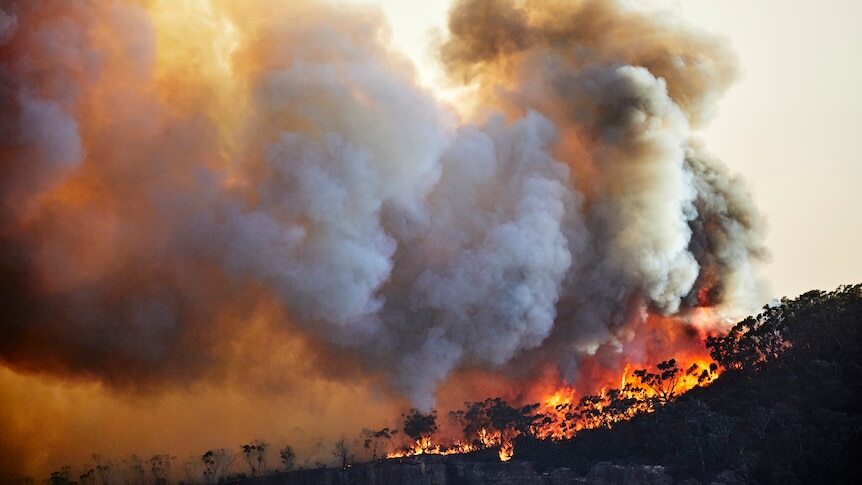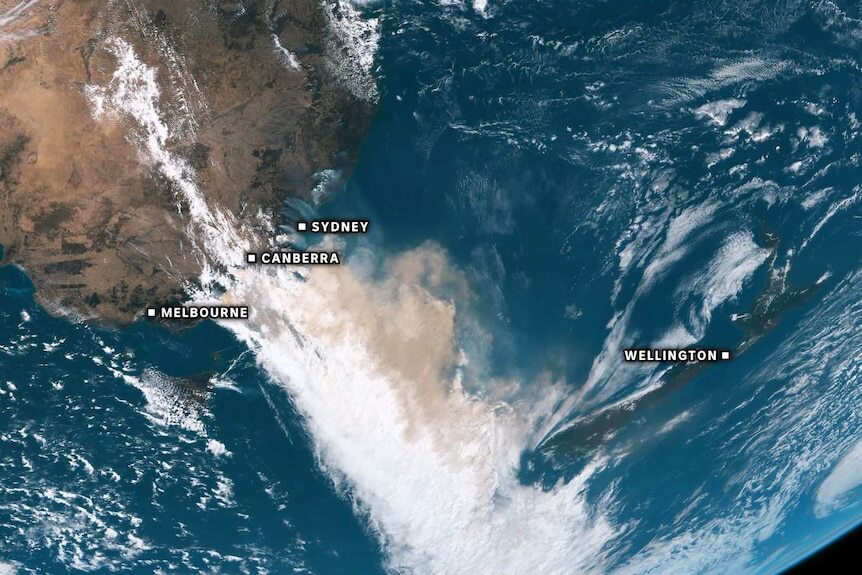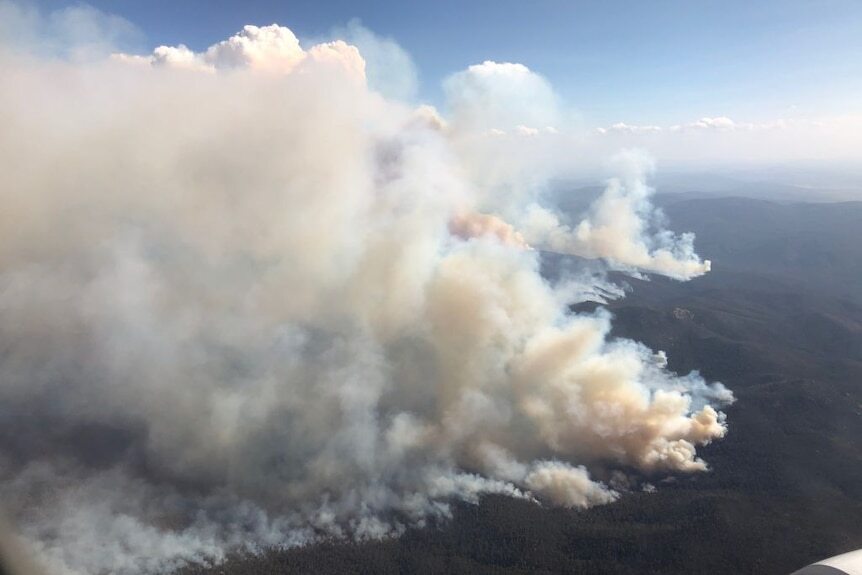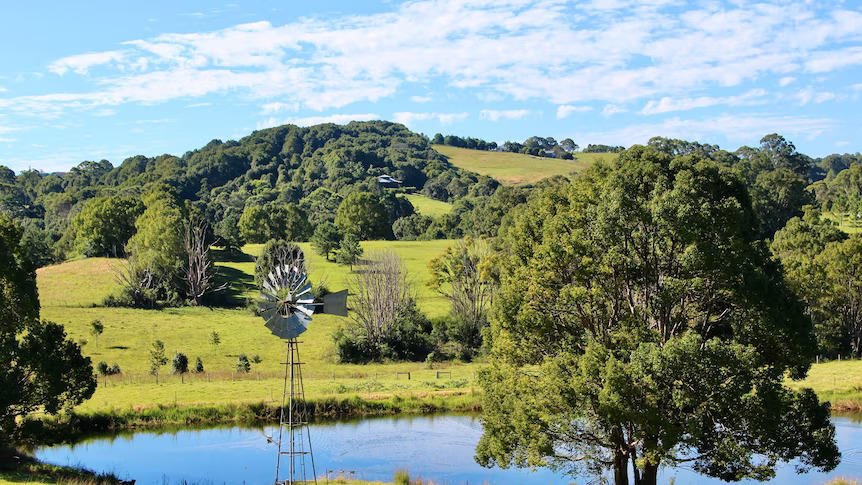Original publication by Genelle Weule for abc.net.au on 18 March 2022

(Getty Images: Andrew Mercy)
As they circled the globe, massive plumes of smoke from the devastating Black Summer fires kickstarted changes in the atmosphere that may have caused a drop in ozone levels, a new study suggests.
A team of researchers, led by Peter Bernath of the University of Waterloo, found smoke from the 2019-2020 fires caused extreme changes in a number of ozone-depleting gases at mid-latitude locations.
The changes were beyond anything that had been measured in the previous 15 years, they report today in the journal Science.
“We’ve seen smoke before, but we’ve never seen this type of effect on the stratosphere,” Professor Bernath said.
Key points:
- Analysis of satellite data shows changes in ozone-depleting gases in the atmosphere following the Black Summer fires
- The finding suggests that smoke may act as a catalyst for ozone depletion in mid-latitude locations
- The authors speculate that increasing frequency of wildfires with climate change may delay recovery of ozone levels
The Black Summer fires produced huge weather systems known as pyrocumulonimbus clouds, which pumped record-breaking amounts of smoke and aerosols directly into the stratosphere between 10 and 30 kilometres above Earth.
The smoke plume from the 2019-2020 fires circled the mid-latitude regions of the southern hemisphere at least twice.
(Gfycat)
The researchers speculate that as fires become more intense with climate change, the impact of smoke from large events may delay the recovery of the ozone layer.
Independent experts said the changes detected in the atmosphere were exciting, but questioned the significance of ozone declines reported in the study.
Similar but different
Ozone gas in the stratosphere provides essential protection against the effects of UV radiation.
But ozone is destroyed by chlorine- or bromine-based gases produced by the breakdown of chlorofluorocarbon (CFC) products in the atmosphere.
Although CFCs were banned in 1987 under the Montreal Protocol, vast quantities of these long-lasting gases are predicted to linger in the atmosphere and not return to pre-1980 levels until sometime after 2052 at the earliest.
Ozone holes appear in late winter over Antarctica (and sometimes the Arctic) as temperatures plummet and chemicals on the surface of ice crystals react with chlorine gases, producing more potent ozone-depleting substances.
Source: NASA
The new study suggests something similar might be happening on the surface of smoke particles at mid-latitudes.
“We can look at the changes in the entire suite of stratospheric molecules, and we see unusual changes in all kinds of gases,” Professor Bernath said.
Professor Bernath and colleagues analysed 15 years of data collected by the Atmospheric Chemistry Experiment satellite (ACE).
Their analysis of data from mid-latitude regions showed increases in average concentrations of formaldehyde, chlorine nitrate, chlorine monoxide, and hypochlorous acid, and decreases in nitrogen dioxide, hydrochloric acid and ozone in 2020 compared with previous years’ averages.
That suggests compounds like hydrochloric acid were being converted into more potent ozone destroyers such as chlorine nitrate, hypochlorus acid, and chlorine monoxide.
Paul Fraser, an atmospheric scientist at CSIRO who was not involved in the study, said the shift in chemistry showed something was stimulating the CFC ozone depletion mechanism.
“These are very similar profiles to what we see in Antarctica,” Dr Fraser said.
Professor Bernath said while the process looked similar to what happens in Antarctica, the concentrations of the various gases were different.
“That’s no surprise because obviously smoke particles are different to polar stratospheric clouds.”
Drops in ozone levels

(NICT Science Cloud)
Ozone levels can fluctuate from year to year and month to month.
Mid-latitude ozone levels detected by ACE began to decline in April 2020 and remained low until December.
While some years had lower levels than 2020 in certain months, no other year in the 15-year period exhibited low levels for such a long time, the researchers reported.
“In the mid-latitudes, the variability is typically a few per cent going up and down, but this decline [averaged over 2020] is more like 10 or 15 per cent,” Professor Bernath said.
“So it’s a statistically significant decrease outside normal variability.”
Robyn Schofield, an atmospheric chemist at the University of Melbourne, said there appeared to be a slight decrease in ozone levels in December only.
While she said the changes in chlorine-based gases were significant, the ozone figures may have been due to the breakdown of the hole over Antarctica.
“We know that the 2020 Antarctic ozone hole was really strong, it was one of the strongest we’ve seen,” Dr Schofield said.
“I think that it’s too early to say it’s all this chlorine chemistry happening.”
Dr Fraser agreed that the decline in ozone detected by ACE, “looked significant around December, but maybe not for the whole year.”
‘Nobody knows the chemistry on smoke’
Dr Fraser said the idea that smoke could be a catalyst for ozone-depleting reactions like those seen in Antarctica was “not a bad assumption”.
“[But] what they haven’t done yet is tested it in the lab, like we have for the ozone hole processes in Antarctica.”
Professor Bernath said the team had speculated about what chemical reactions might be happening and agreed they needed to be confirmed in laboratory experiments.
“What we see is the effects of the smoke, but we don’t actually measure the chemical reactions as they take place on smoke,” Professor Bernath said.
Nobody knows the chemistry on smoke.
“Which also means the atmospheric models don’t work because you can’t put the smoke chemistry in the model, because you don’t know what the smoke chemistry is.”
Could fires delay ozone recovery?
This is not the first study to suggest that smoke can destroy ozone, and that more frequent fires with climate change could slow the recovery of the ozone deficit back to pre-1980 levels.
Professor Bernath said this point was still “very speculative”.
“We’re not really in the business of predicting the future, but if pyrocumulonimbus clouds continue to be more frequent on average … then obviously it will take longer to get back.”
Dr Schofield said if smoke did affect ozone, it could have more impact if fires were more intense, or further towards the polar regions.
“The stratosphere is actually closer to the surface as you head toward the poles, so it’s easier to punch into the stratosphere,” Dr Schofield said.
Dr Fraser said fires would need to be very frequent to make a difference to the long-term global ozone levels.
“If you don’t have a fire every year, then this ozone deficit won’t come back every year,” he said.
While climate change would increase fire intensity, he said it was unlikely that Australia would see another fire of the Black Summer scale for at least another 10 to 20 years.
“What you also have to remember is how big the Australian fires were.”

(Getty Images: John Moore)
He said the conditions have also got to be right for injecting material into the stratosphere to have an effect on ozone levels.
“Since [ozone depletion is] barely detectable in this massive fire, it’s probably not detectable in smaller fires.”
Professor Bernath said while the impact of smoke from smaller fires such as the 2009 Black Saturday fires or Californian wildfire had not been studied, it could still have some impact on the atmosphere.
“This type of chemistry is going to take place, it’s just that the Black Summer fires were so dramatic you could see the effect very easily.”
He said the team would look at other firestorm events to see if there were any effects, as well as study the impact of particles in the atmosphere more closely.




